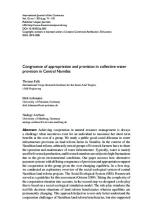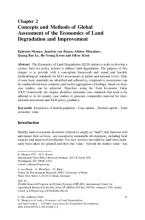Land Library Search
Through our robust search engine, you can search for any item of the over 73,000 highly curated resources in the Land Library.
If you would like to find an overview of what is possible, feel free to peruse the Search Guide.
/ library resources
Showing items 1 through 9 of 62.The concern for the well-being of land is often directly related to one’s proximity to the land, be it physically, economically or culturally. Land is more precious if one’s livelihood depend on it immediately than if one is merely a visitor.
Arid, semi-arid and dry sub-humid areas cover 61 % of Tanzania (United Republic of Tanzania, 1999) and, over the past decades, several restoration projects have worked toward reversing degradation in these areas (Kikula, 1999; Kisanga et al., 1999).
Achieving cooperation in natural resource management is always
a challenge when incentives exist for an individual to maximise her short term
benefits at the cost of a group. We study a public good social dilemma in water
Water management practices such as water harvesting yield important environment and socio-economic benefits by reducing environmental risks, improving soil
Extreme weather conditions such as drought and floods, a changing and more variable climate, and the unsustainable use of the natural resources are amongst
Urmila Pujari belongs to the Bhumia tribe of eastern state of Orissa in India, a culturally rich and one
of the largest tribes in India. The tribe relies on farming for livelihood, but very few farmers cultivate
poster about Improving Land and Water Productivity in IGNP Command Area.
The Economics of Land Degradation (ELD) initiative seeks to develop a
science basis for policy actions to address land degradation. The purpose of this
chapter is to provide with a conceptual framework and sound and feasible
We created a matrix of restoration options for each country, including potential benefits of the technologies and possible constraints.









